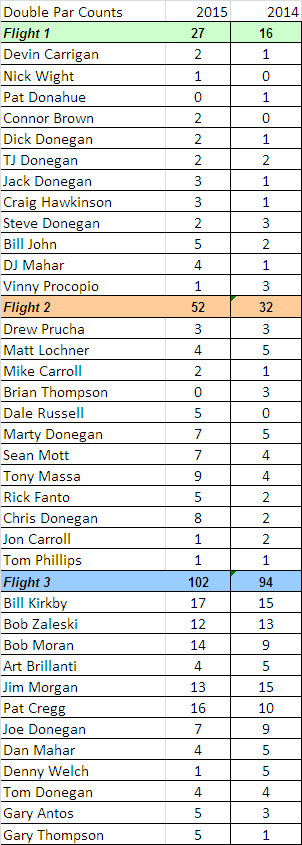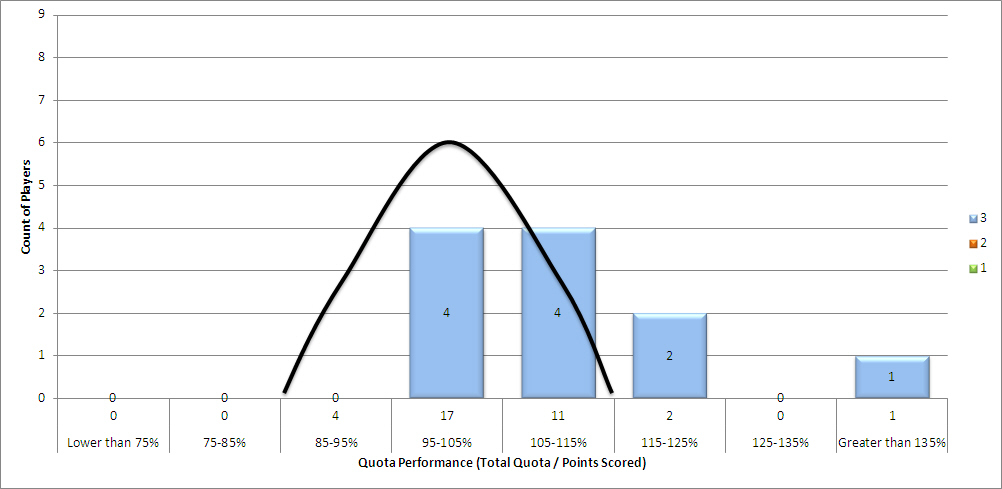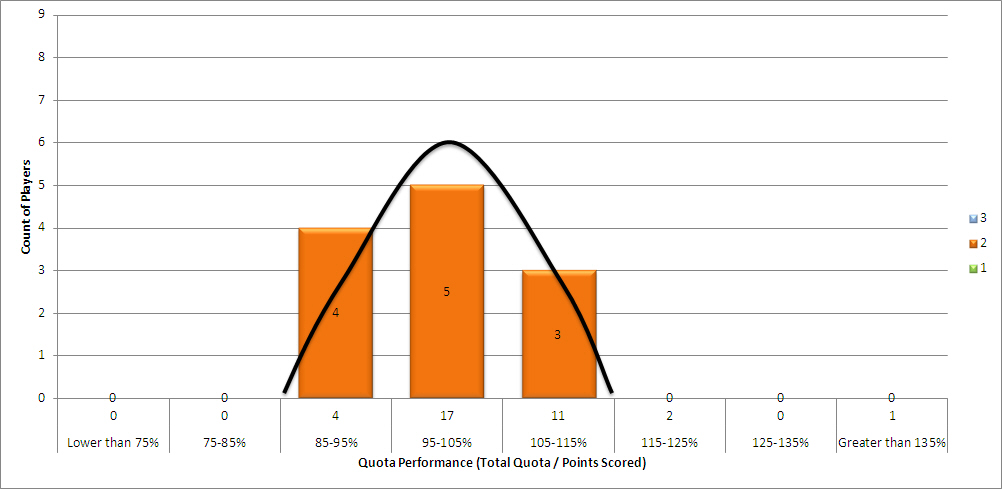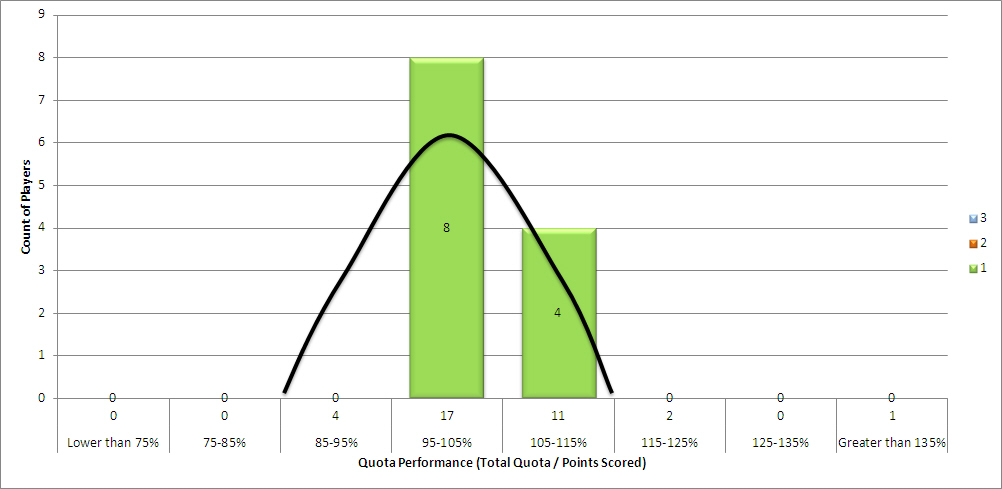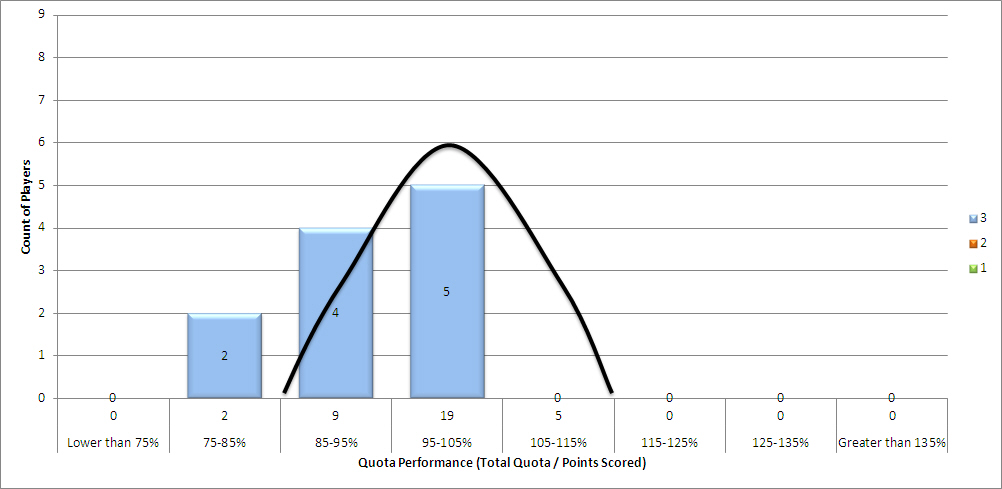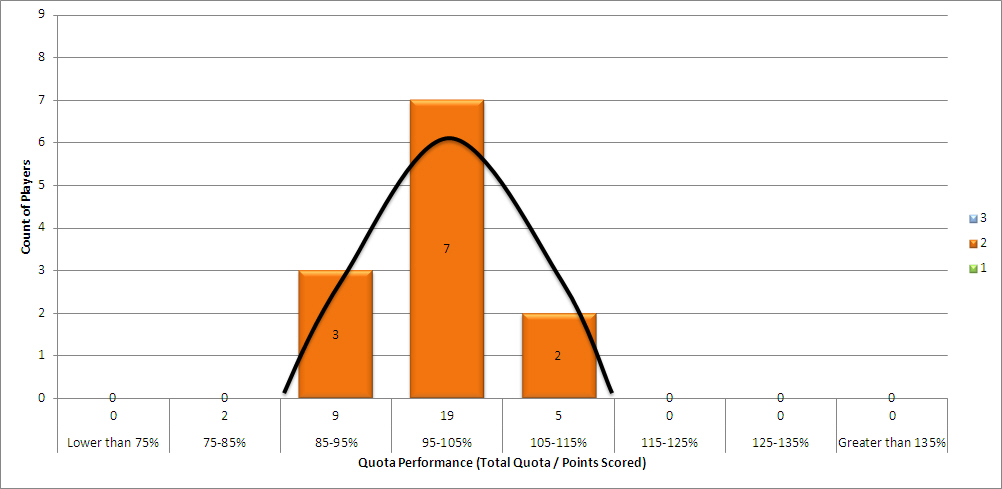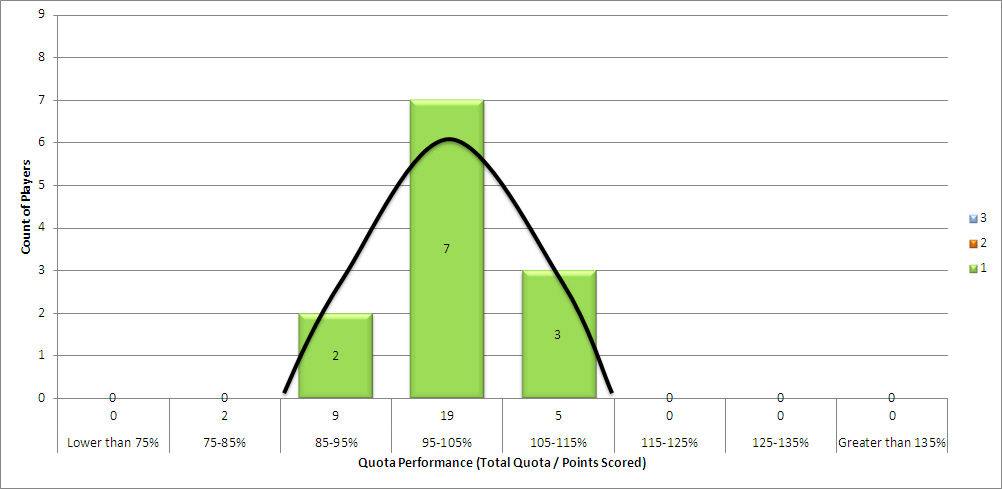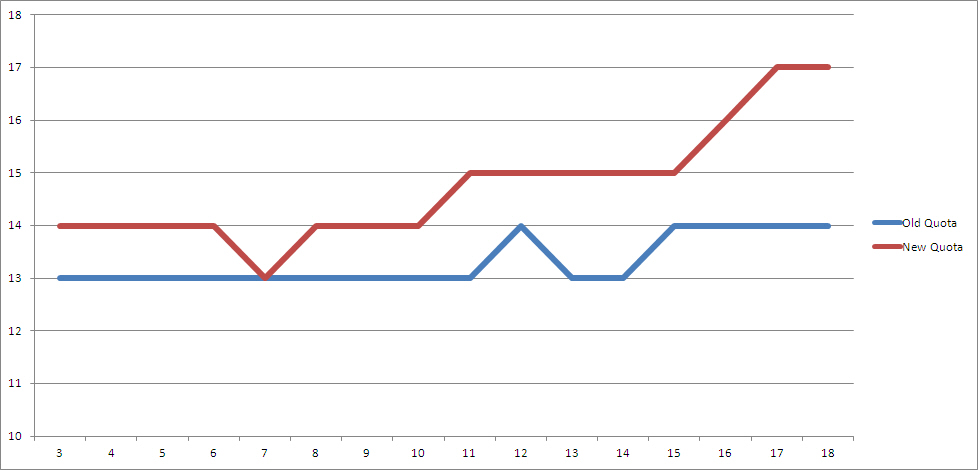Heading into 2015, the off-season meeting led to the implementation of 3 changes:
- Reduction in value of an Eagle from 8 points to 6 points
- Incurring of -1 point for scoring of Double Par
- Changing Quota formula to be based on the last four weeks of play and allow for Quotas to move more than 1 pt per week
Reduction in value of Eagle from 8 to 6 points:
The was no real statistics behind this. The logic was that achieving an eagle for 8 points made the match insurmountable for the opponent, thus reducing the match down to the one lucky/skillful hole.
This rule change had minimal impact in 2015. There were only two eagles for the entire year (TJ Donegan on #13, Brian Thompson on #18).
IT NERD OPINION:
This rule change had minimal impact. If anything, it helps the league overcome a “lucky/skillful” hole.
Incurring -1 point for scoring of Double Par:
Here’s how the league did in terms of registering Double Pars for 2015 (middle column) and 2014 (right column). As you can see, there were more Double Pars in 2015 than 2014.
When looking at how players scored relative to their Quota in 2014, it was seen that the various flights performed differently. The black line is what is considered a “normal” distribution…or how we want the scoring to look.
2014 Graphs
In looking at 2014, it seemed that Flight 3 was able to score well versus their quotas. Two players scoring 115%-125% and one player scoring over 135% of their quota
Flight 2 was more centrally distributed.
Flight 1 was centered as well with a slight skew to higher performance.
Heading into 2015, we wanted to get the Flight 3 graph to look more like Flight 1 or 2. Hence, the introduction of the -1 point for Double Par. Here’s how the graphs look for 2015
2015 Graphs
For 2015, Flight 3 shifted from over-performance against the quota to under-performance. When you look at the graph, it would appear that the Flight 3’s were hit hard by the -1 point rule. However, when you look deeper at the numbers, it wasn’t due to this rule.
Like last year, Flight 2 was also pretty centrally distributed.
Flight 1 is almost a mirror image of Flight 2, very centrally distributed.
IT NERD OPINION:
The intent of the rule was to bring Flight 3 back into a more normal distribution. Flight 1 and 2 are coming in right where we want them. So what happened to Flight 3 this year?
When you dive deeper into the numbers for Flight 3, it wasn’t the occurrence of Double Par the drove the lower performance. Of the golfers below the 95%-105% line, only one of those golfers had more than 5 Double Pars for the entire year. For those keeping track at home, 5 Double Pars represent only about 3% of the total scores.
The reality is that it was more of rise averages. Those golfers at the lower ends of the graph of Flight 3 saw a rise in their averages. That means there were more double bogeys, triple bogeys for those golfers, not so much a large rise in Double Pars.
Overall, I’d say the the rule was a success and should be a continued part of the league
Changing Quota formula to be based on the last four weeks of play:
The 2014 Quota formula was based upon the player’s performance over the entire year up to that point. While it was relatively easy to fluctuate Quotas in the early parts of the year, it became nearly impossible to move a Quota in the last few weeks of the year. This went counter to how players were actually performing. Players were getting better as the year went on, especially towards the end. However, due to the formula, their Quotas were not decreasing at the same rate in which the player’s scores were decreasing. We needed to have the formula be more responsive to how the player was actually performing over the past month, rather then how they did 3 months ago. Thus, the Quota formula was modified to only take into account the last four weeks of play.
The second piece to this change was about allowing Quotas to move more than 1 point per week. If someone is really struggling or catching fire, their Quota should be allowed to move to properly reflect the players current situation.
To provide a perfect example of how this works, look no further than Connor Brown and his 2015 year. The blue line on the below graph shows what Connor’s Quota would have been for 2015 using the old Quota formula (entire year). The red line shows what his Quota was using the new formula (last 4 weeks).
What this shows you is that Connor’s Quota stays stagnant in Week 15-18…just when he started to heat up! In the old format, Connor would have been under quoted by nearly 3 points!
IT NERD OPINION:
This change was probably the one that had the most impact. I got FAR LESS questions this year of “I just shot X, how am I still a Y?”. Player’s Quotas were also allowed to move more than one point per week as a part of this change. I think the entire league can agree: the Quota should be reflecting how a player is performing lately as opposed to over the entire year, which could be more than a few months ago!
